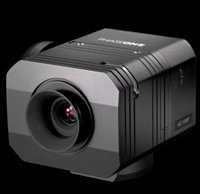Phase One improves their iXG cultural heritage camera system with new features
posted Thursday, June 21, 2018 at 6:00 AM EST

Last spring, we covered Phase One's announcement of their iXG Camera System, which is designed specifically for cultural heritage digitization. For example, the system is ideal for preserving important cultural and historical documents and images. While we know that this is highly-specialized, we wanted to share some news about Phase One's latest iXG developments, as it is a very interesting use of digital camera technology and one with important social utility.
The overall themes of the updates are automation and efficiency. To help improve the workflow of their iXG system, Phase One has introduced a new simplified capturing user interface for Windows, dubbed "Slipstream." The Cultural Heritage software allows for users on Windows touchscreen devices to efficiently capture large volumes of images, even if they are not trained in the full Cultural Heritage system. This is critical for institutions needing to digitize large files as spending time training operators is time they aren't able to spend efficiently digitizing materials.
Further, the iXG system now has PPI assist, which allows for more precise focusing and refined lens profiles. On Cultural Heritage 11.2 on MacOS, for example, you can easily set the camera up for scanning at a specific PPI resolution, magnification or field of view. The software utilizes the camera position to calculate offset on a given copy stand column. The system now also supports a pair of extension tubes for its 72mm and 120mm lenses, making the iXG system well-suited for digitizing and reproducing film transparencies, film rolls (positive and negative), mounted slides, sheet film and glass plates. This is up to 400 times faster than a flatbed, drum or virtual-drum scanner and minimizes handling of sensitive and fragile films. It's worth noting that this does require the optional Phase One Transparency Kit.
For more information on the Phase One Cultural Heritage system, including the iXG camera, click here. If you'd like to see samples of what the iXG can do, click here.